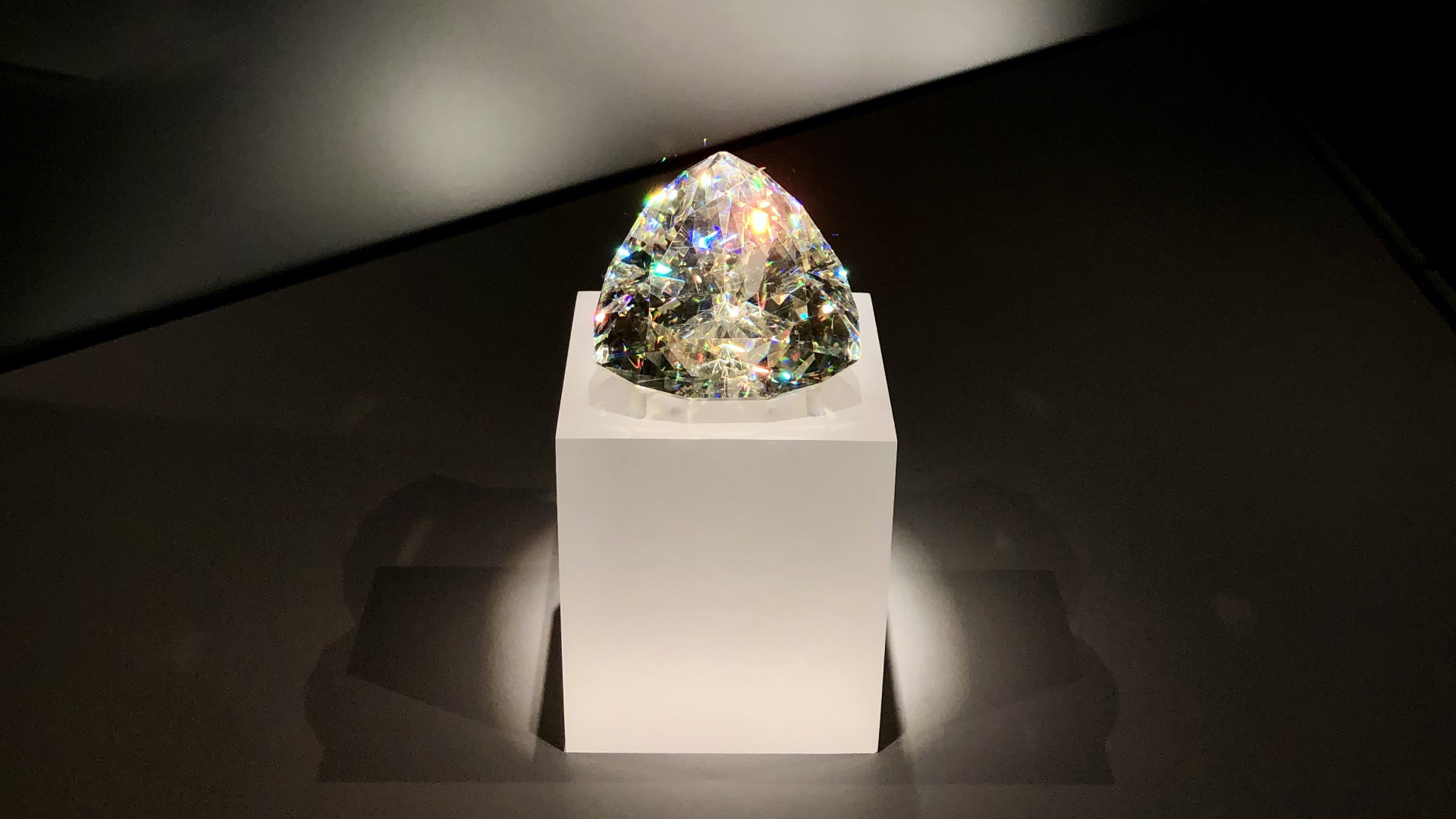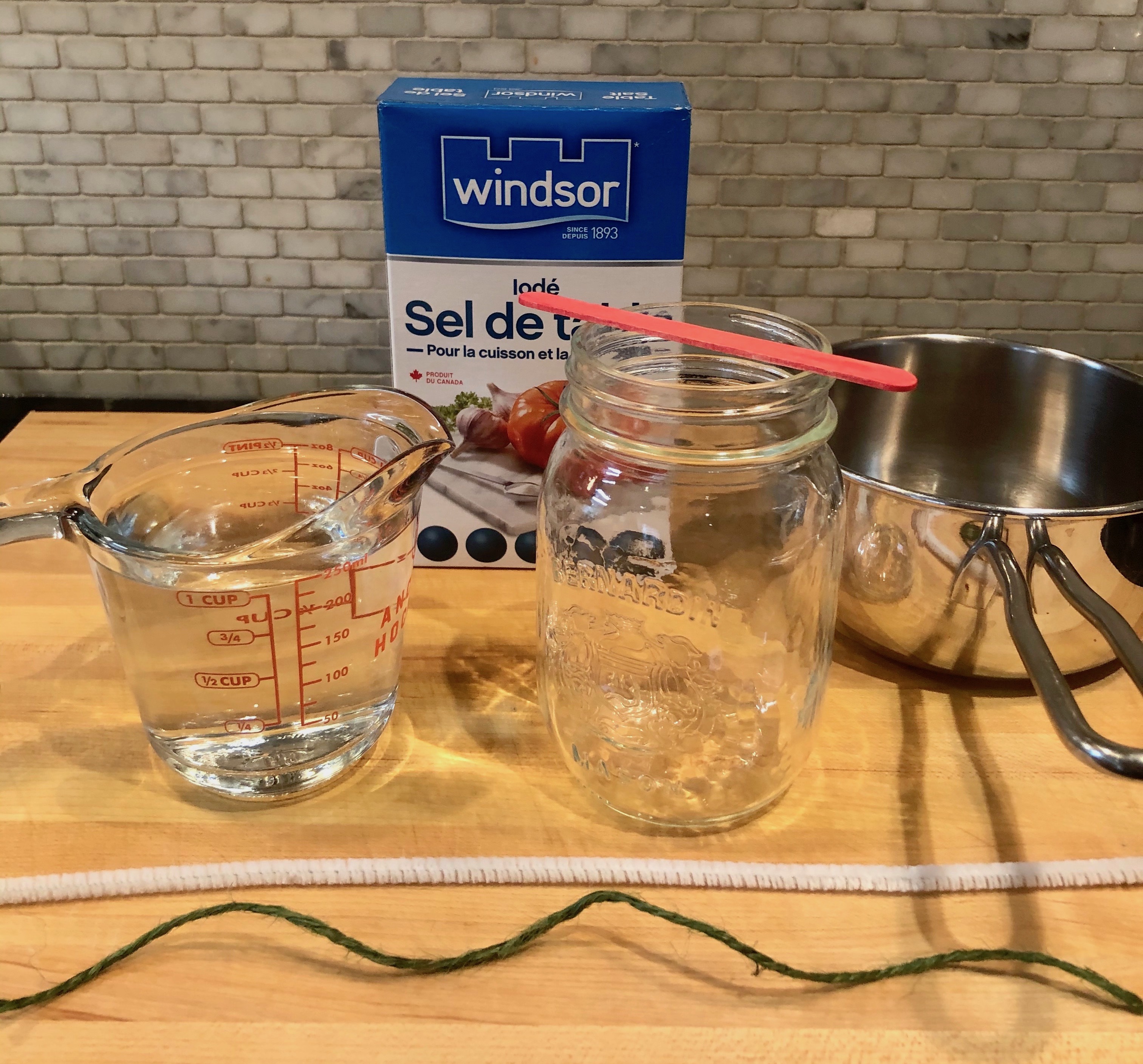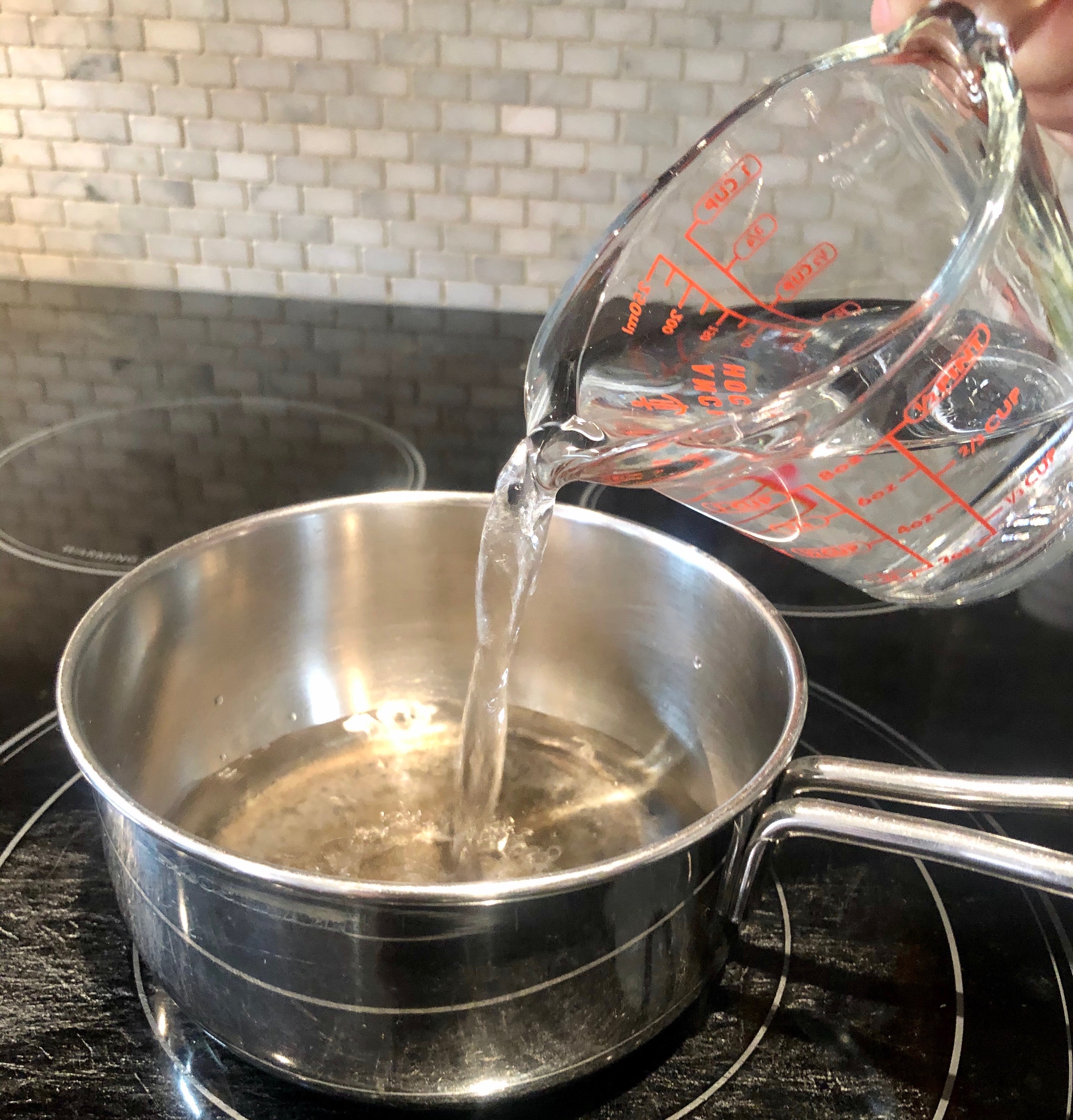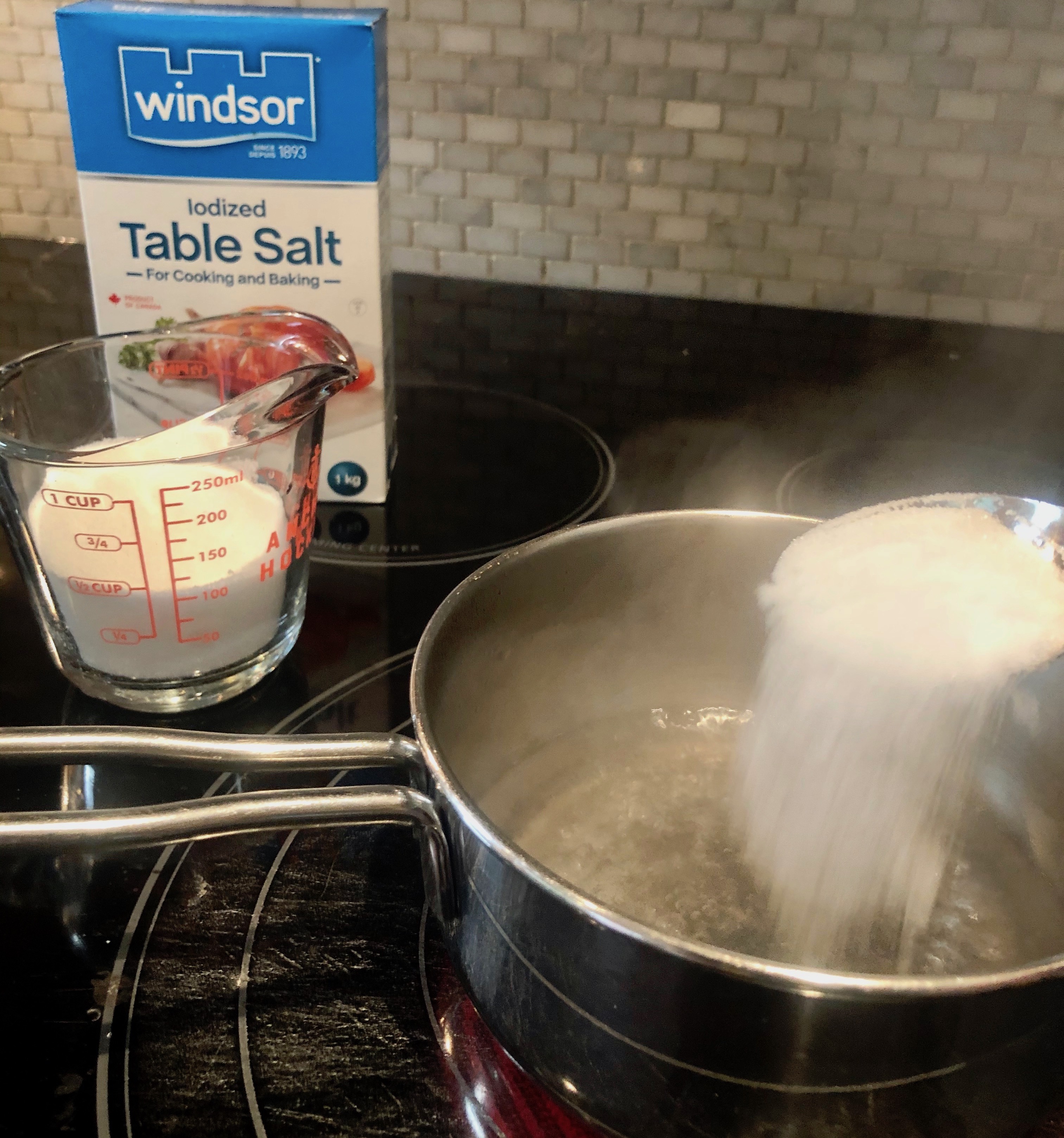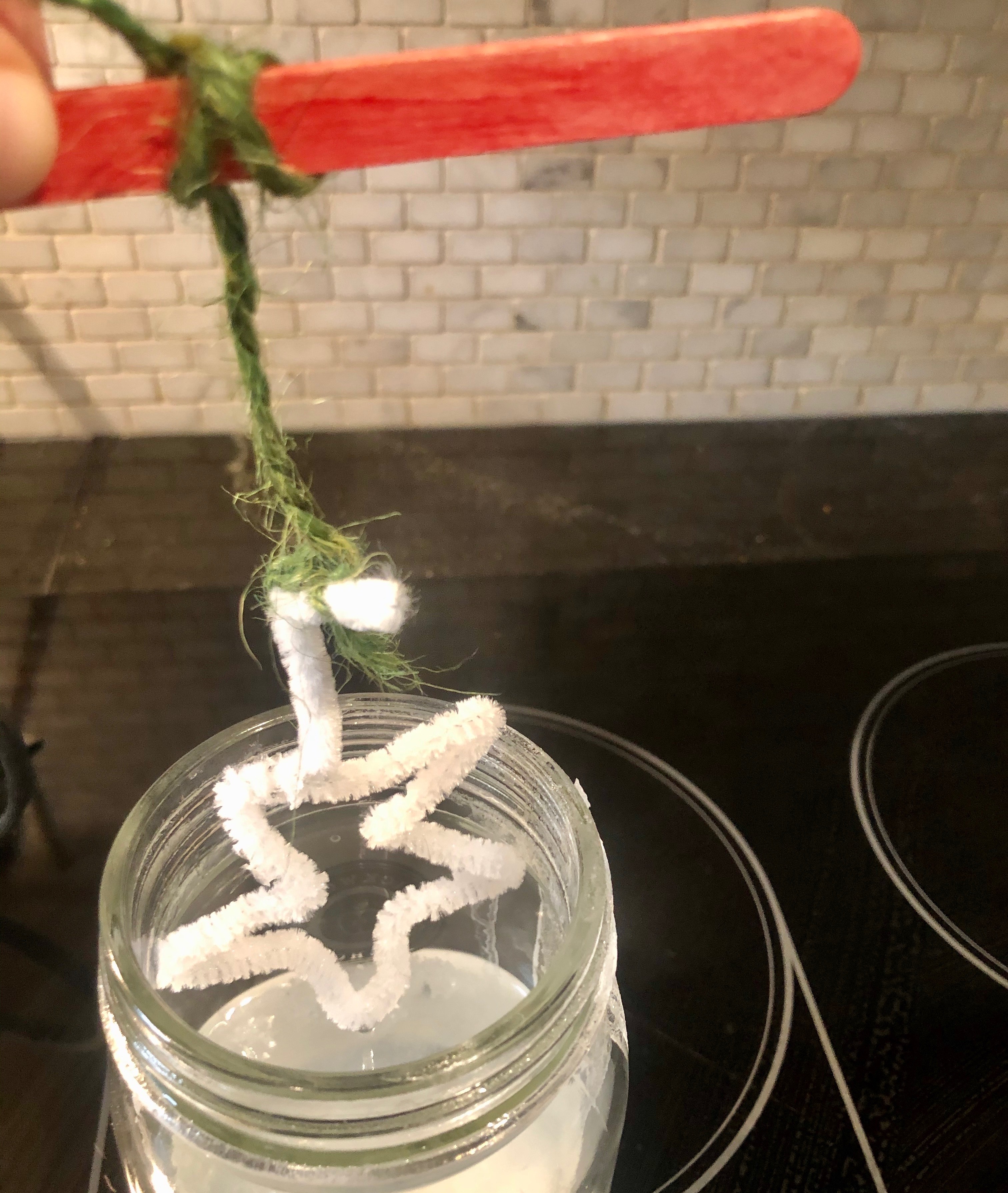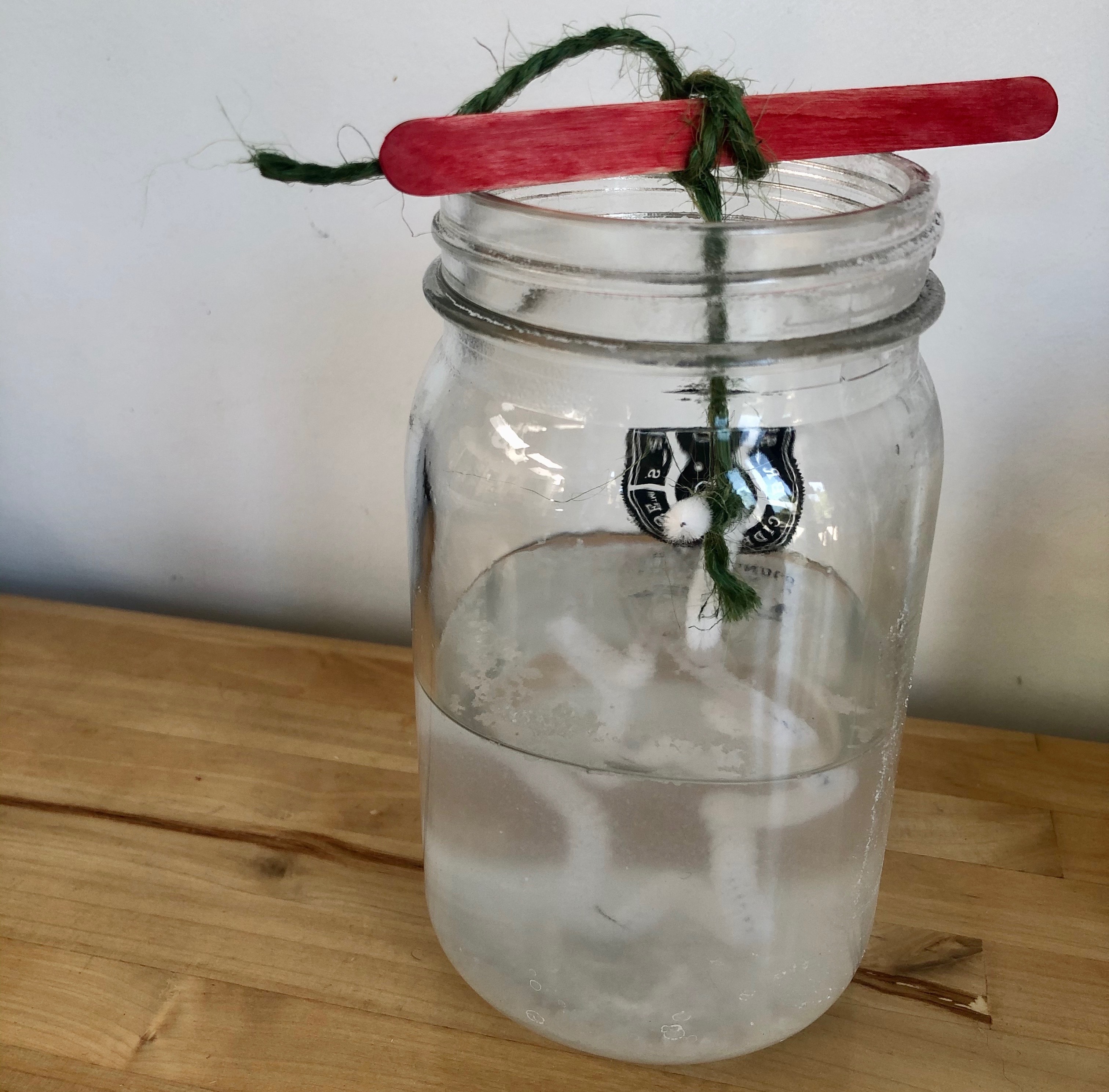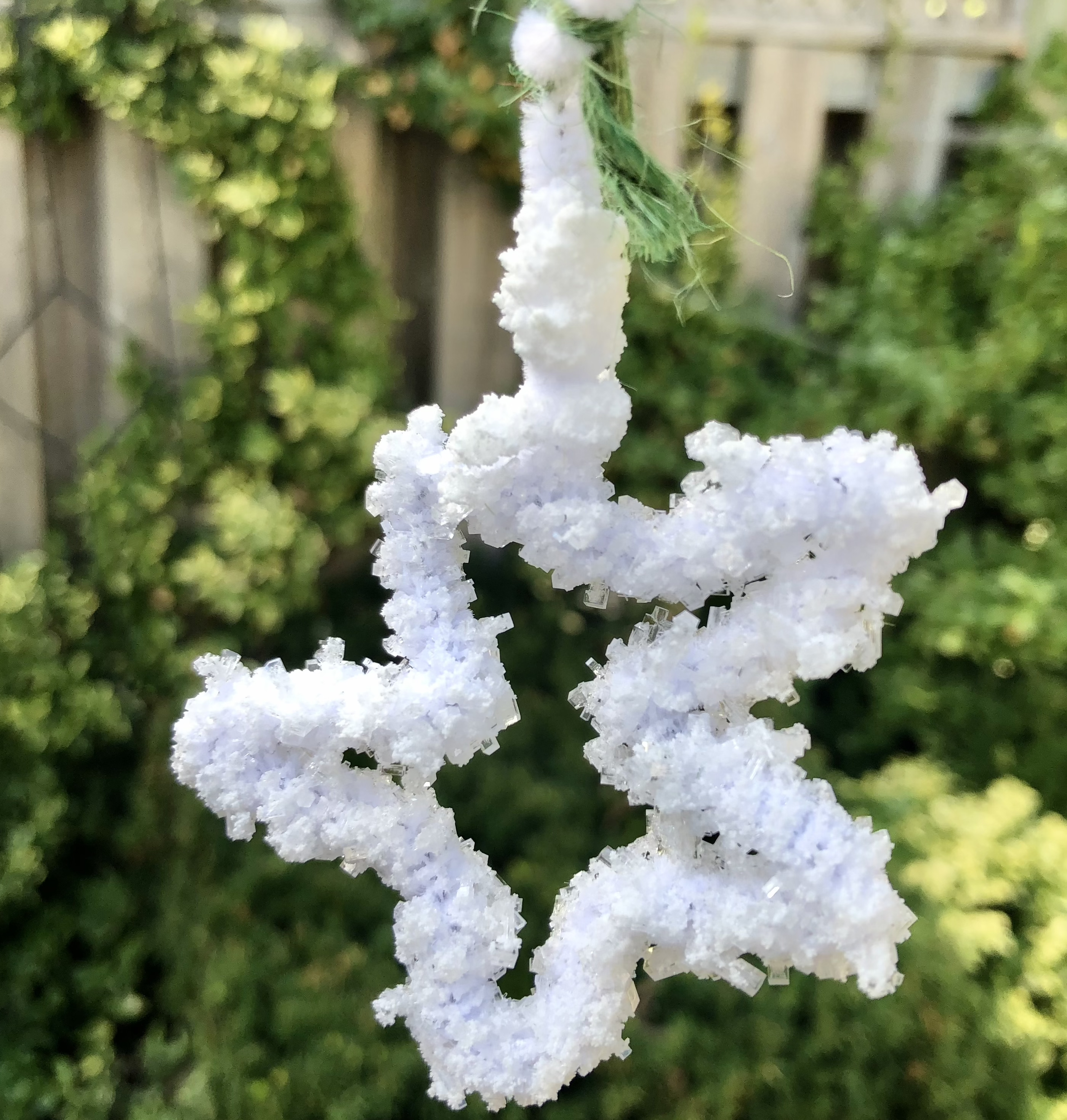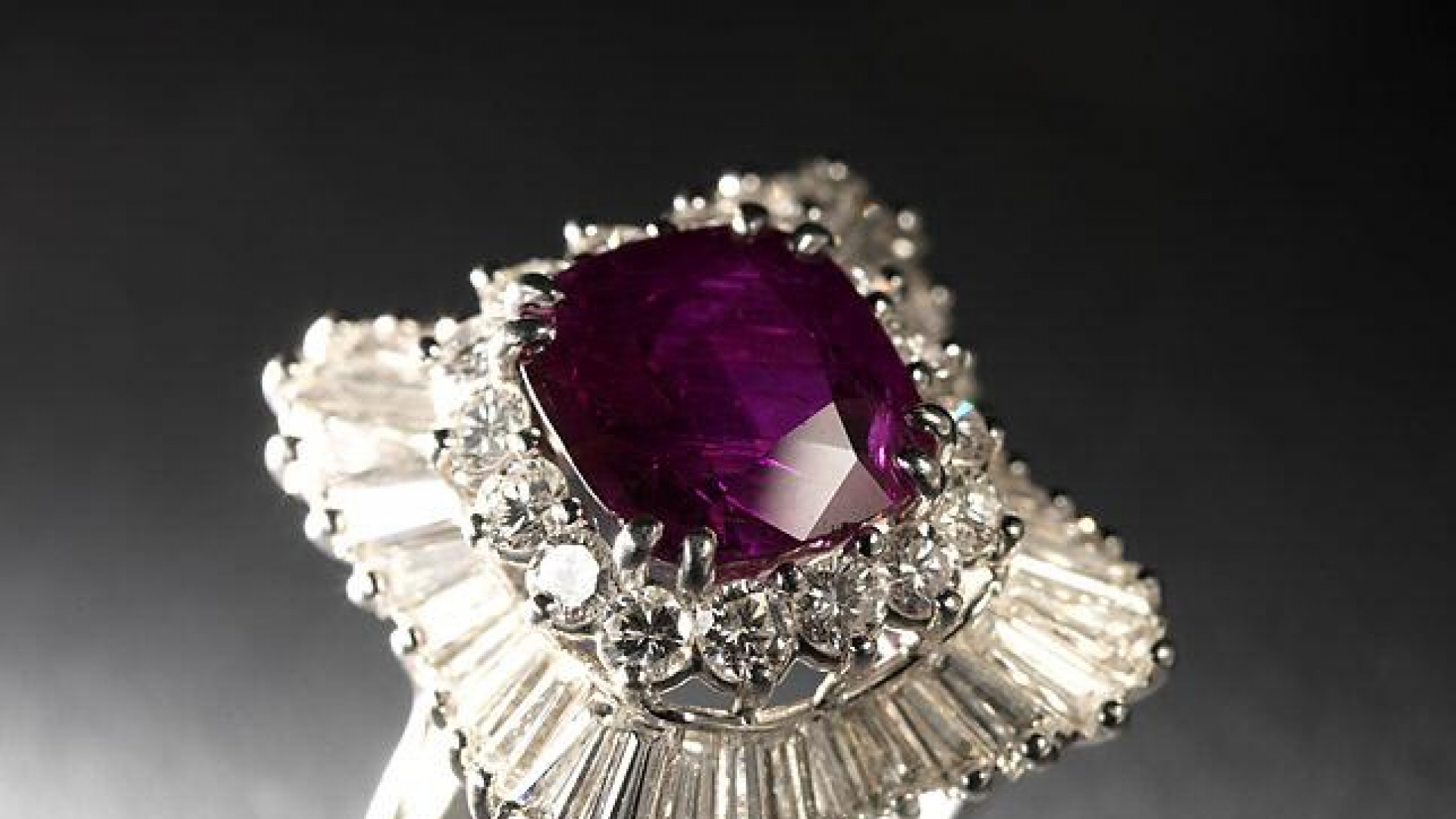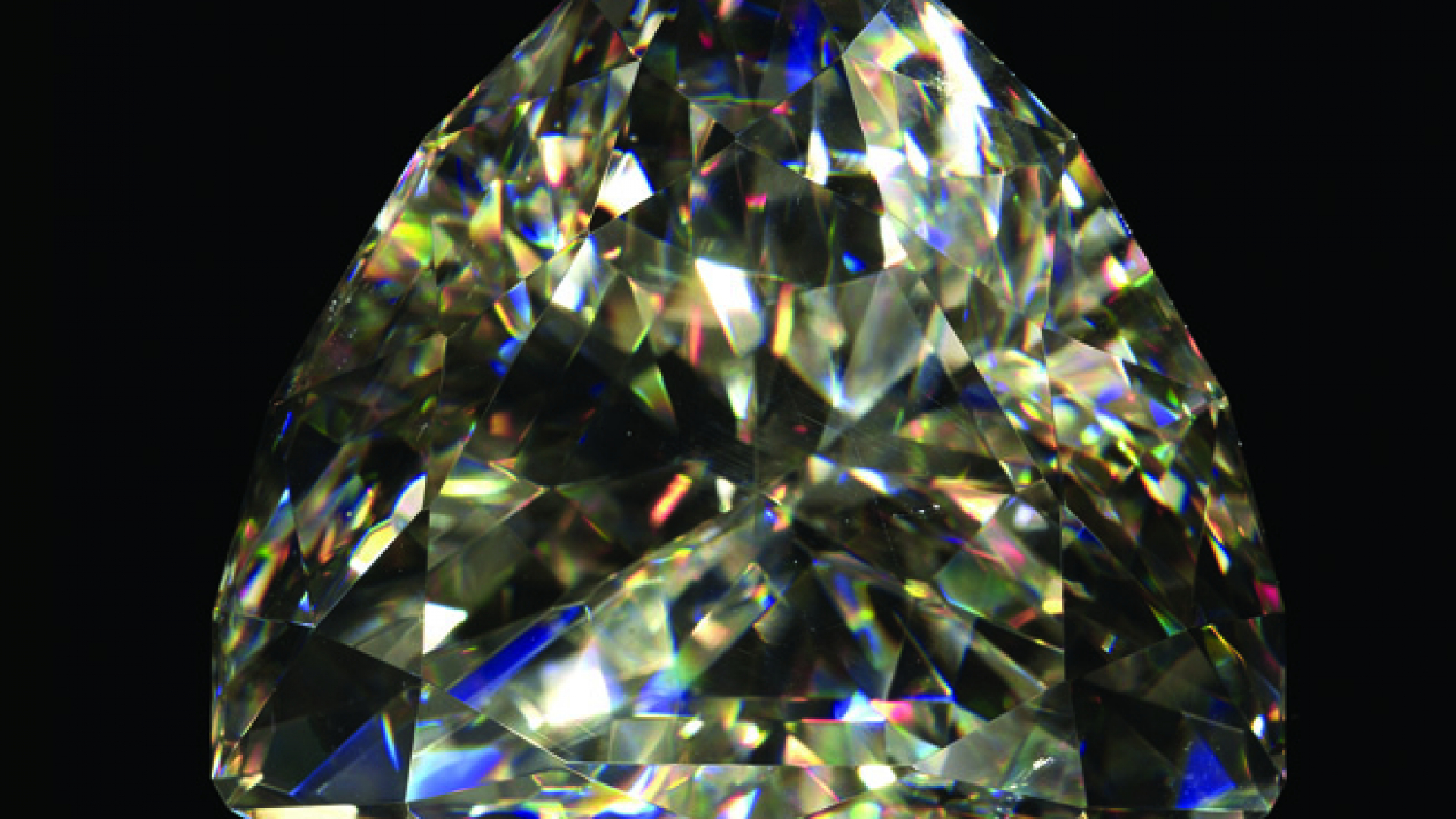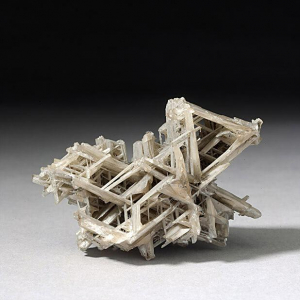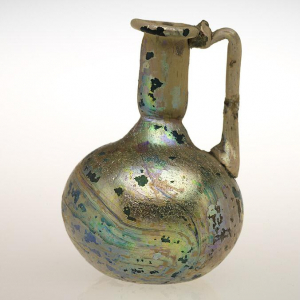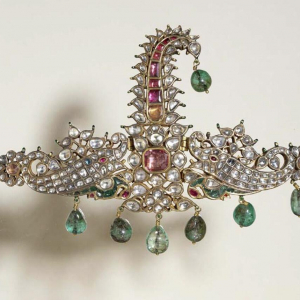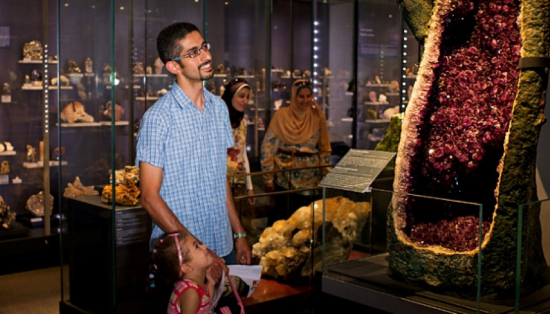Rock on, Artventures!
Today we turn into gemologists to make our very own homemade crystal! While you’re waiting for your crystals to grow, learn all about Earth’s gorgeous gemstones. Then, discover the journey that our cerussite gem took to get to the museum—and why it’s called the Light of the Desert.
Materials
- 1 ½ cups of water
- Approximately ½ cup of salt
- Heat safe glass or jar
- String
- Popsicle stick or pencil
-
Optional:
- Food colouring
- Pipe cleaner
For this activity you’re going to need some extra help from an adult, so call over a trusted grown up, grab your materials, and get ready for some gem-making!
Step 2: Turn your water down to a simmer and add your salt little by little, stirring to help it dissolve.
We are trying to make a supersaturated solution. To do this, keep adding more salt until you notice that the salt won’t dissolve anymore. We measured it to be about ½ a cup of salt, but it can vary, so just stop as soon as you notice salt sitting at the bottom!
Different types of salt have different reactions. Table iodized salt will take a bit longer to form a crystal, but will still work. Epsom salts will grow quickly and create spiky crystals, and alum will grow crystals the fastest (within a few hours). Experiment with different salts and see which salt crystal you like best!
Step 3: Tie one end of your string to the pencil or popsicle stick. Measure your string out so that it doesn’t touch the bottom of the glass when the popsicle stick rests on the rim—you will want it to hang about ½ - 1 inch from the bottom. Use a pipe cleaner to create a fun star shape for the crystals to form around!
Gemstones are minerals (substances that form in the earth) that can be polished and cut into sparkling stones like diamonds, rubies, sapphires, and emeralds. There are also some rocks and organic materials that are gemstones, like pearls, which form in oysters, amber, which is hardened sap from trees, and more.
Gemstones’ beauty has made these stones popular around the world, having been used in both past and present societies as impressive decoration, charms, symbols of love, signs of status, and more.
For example, in ancient Egypt, people believed gemstones held traits—red ones symbolized power, protection, and life, whereas green gemstones represented fertility, happiness, agriculture, and rebirth.
A slightly more modern example is engagement rings! Simple metal wedding bands were an ancient Roman tradition that was popularized in the Middle Age when gemstones were added. Nobility wore these rings to show their wealth and relationship status. Today, this trend symbolizes love and commitment in many cultures.
Cerussite is a lead mineral that is often white, gray, blue, green, or colourless. It is also incredibly delicate. Because of this, it’s really hard to cut and polish the ore (the raw mineral), making cerussite gems rare—as a result of this and their brilliant sparkle, cerussite gems are popular with collectors.
The ROM has a very special rare cerussite gem on display called the Light of the Desert. The raw stone was found in Tsumeb, Namibia before being sent off to Arizona, where it was carefully cut into the stone that is now on display at the Museum. The gem is an astounding 898 carats—it’s the world’s largest shaped cerussite gem!
The gem’s journey to Toronto began during winter. Cerussite’s sensitivity to temperature and movement made transporting it difficult and stressful! The challenge was getting it safely from Arizona’s hot temperatures to Toronto’s below-freezing climate, through the pressures and bumps of plane and car travel, without breaking the stone.
To keep it safe, our gemologist bundled it up in a thick wool scarf and a warm winter vest to keep it warm and protected.
Throughout the over 5-hour journey, our gemologist couldn’t even sneak a peek to see if the gem was okay. When it finally arrived at the ROM, the mineralogy team unwrapped the gem and were relieved to find it in pristine condition!
Today, you can find the stunning Light of the Desert cerussite gem on display in the ROM’s gems and minerals gallery. One of the coolest features of this cerussite gem is its ability to reflect the light in a process called dispersion, or fire. Cerussite gems have a high dispersion that creates an effect like a kaleidoscope—if the light hits it just right, it reflects a rainbow!
From left to right: Cerussite, ROMESE3158. One handled flagon, 950.157.46. Sarpech or turban clasp with mythical “makara” creatures, 969.271.9.
During your next visit, enter the gem vault at the back of our minerals gallery and be awed by the magnificence of our gemstone collection!
Find our special cerussite gem and try to capture the rainbow! (Hint: let the reflection hit your hand, your body, or a piece of paper.) While you’re in our mineral gallery, find this rough cerussite mineral.
Once you’ve caught the rainbow, journey through the Museum to find other mineral rainbows! Can you spot the Syrian glass jar in the Byzantium gallery?
Gemstones have been used all over the world. Travel to our South Asia gallery and marvel at the sparkling diamond, ruby, and emerald sarpech (turban clasp) from India.
On your adventures around the Museum, stop by our Dinosaur gallery and search for our special amber display!

